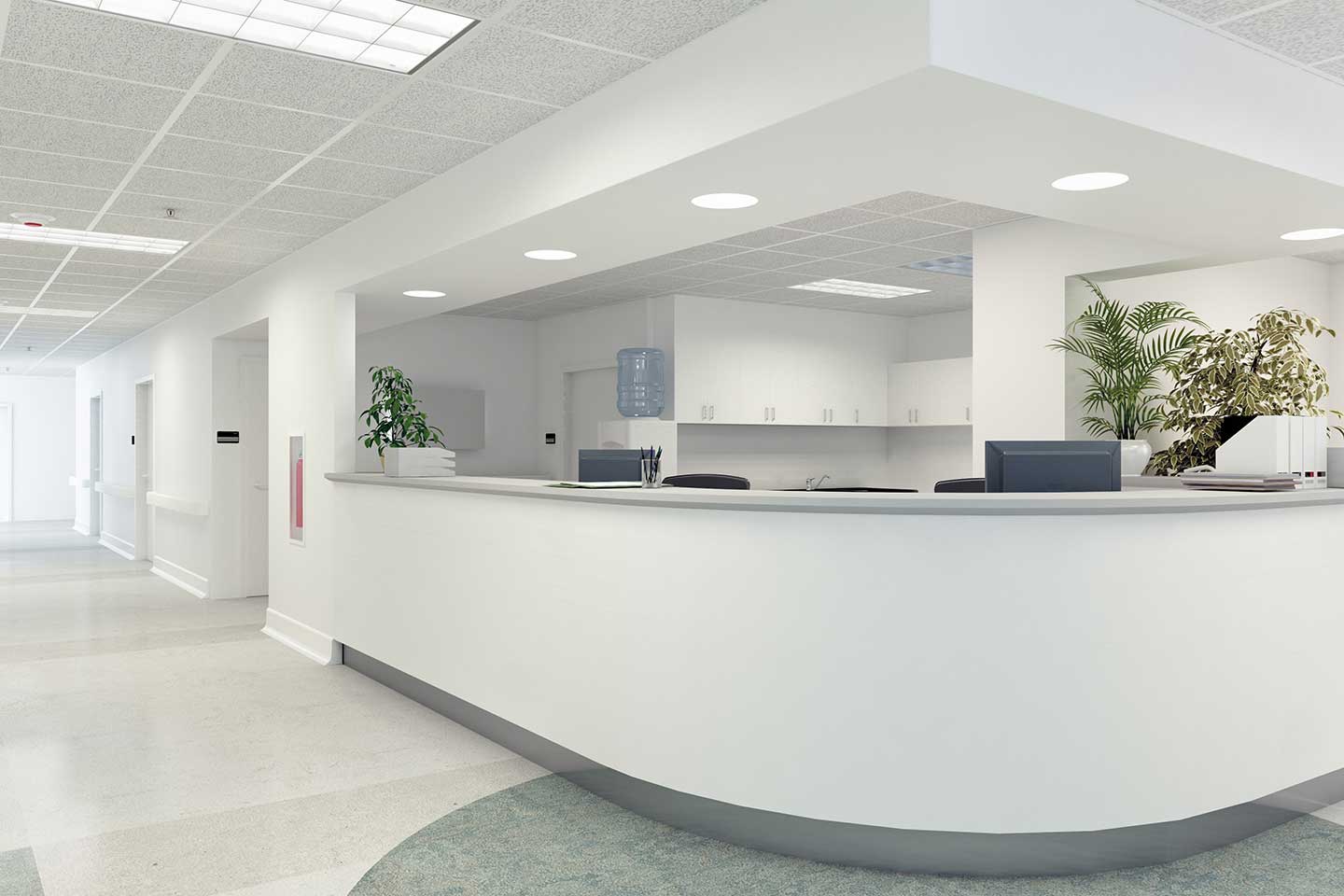adThe general shortage of a skilled healthcare workforce has also brought breast cancer screening to its limits: there are fewer and fewer radiologists and radiology technicians (‘MTRAs’), and increasing patient numbers to work through in less time. This has a negative impact on both the working environment and job satisfaction, but above all, it affects the quality of preventive health services for millions of women. Demographic change will only exacerbate the situation in the future. How can we avoid an impending collapse of the healthcare system?
How many additional specialists are needed in medicine?
There are alarming figures which can illustrate the extent of the shortage of skilled healthcare professionals: According to a recent study by the management consultancy firm PricewaterhouseCoopers (PwC), 7 percent of vacancies in the healthcare sector can no longer be filled due to a lack of suitable specialist candidates. The situation may dramatically deteriorate over the next few years. By 2035, the authors of the study forecast a staffing shortage of 35 percent – one in three posts would remain unfilled.
What areas are most affected by the shortage in skilled workers?
The situation is particularly precarious in the areas of nursing care and care of the elderly, where up to 37 percent of all posts could remain unfilled in 2035. There is also a risk of a massive shortage of doctors. The experts at PwC estimate that it will no longer be possible to fill almost 30 percent of posts in both medicine and dentistry in 2035.
This shortage of medical specialists is not just limited to Germany, though. Other industrialized countries, such as the USA, are also facing similar challenges. According to the US-based American Association of American Medical Colleges (AAMC), there will be a deficit of between 54,000 and 139,000 doctors required by 2033 (depending on the model and assumptions applied), including 21,000 to 55,000 doctors needed in primary care.
Why is there a shortage of specialists in healthcare?
There are several reasons why the healthcare sector in particular is so severely affected by staffing shortages:
1. Demographic change
The main driver behind the healthcare workforce shortage is demographic change. This affects the health systems of industrialized countries in two ways: On the one hand, there is an increasing proportion of elderly, multimorbid people who need more intensive medical care. At the same time, however, the average health worker is also getting older. As the baby-boomer cohort, originally bolstered by a high birth rate, gradually reaches retirement age, there are too few young people entering the system to fill in the gaps.
2. Unattractive working conditions
Another key factor at play in the shortage of healthcare specialists is the working conditions. Physical and mental stress, overtime, night shifts, a lack of recognition, and poor pay all result in a high turnover of existing staff, while also resulting in young people shying away from starting out in a medical career. This creates a true vicious cycle: the less staff on the ground, the more pressure placed on the remaining employees, and the more staff end up looking for something different.
3. Failures in staff training
The number of graduates from MTA (medical technician) colleges in particular has seen a steady decline in recent years. One possible reason for this is that trainees are unpaid, which makes the profession comparatively unattractive for young people.
To what extent is breast cancer screening affected by the shortage of healthcare workers?
The shortage of medical specialists represents a threat to healthcare across all sectors and on every level, with breast cancer prevention being particularly affected. Even today, the situation is precarious in many areas due to a lack of gynecologists, radiologists and, most of all, radiology technicians: as a 2019 study by the German Hospital Institute (Deutsches Krankenhausinstitut; ‘DKI’) showed, almost one in two hospitals has problems filling MRTA posts. In view of declining student numbers paired with an increase in demand, the DKI expects the MRTA shortage to worsen in the future.
According to surveys conducted by the management consultancy firm, PwC, Germany could need as many as 4,000 additional radiologists for its hospitals by 2030. In the USA, too, specialist societies are warning of a healthcare workforce shortage in radiology, driven mainly by demographic change: according to the American College of Radiology (ACR), 53 percent of radiology specialists today are already 55 years of age or older.
What are the consequences of a shortage of medical specialists working in breast cancer screening?
Radiologists and MRTAs do not need to look at statistics to notice the shortage of skilled healthcare workers: they can sense it in their workload, their overtime, and the increasing pressure they are being put under. As a recent American study has shown, burnout rates are worryingly high, especially among radiologists working in the field of breast cancer screening.
This may also be due to their particular working conditions: at present, women aged 50 to 69 are advised to attend for breast cancer screening every two years, with about half of those invited regularly taking advantage of the service. Abnormalities are generally found in 6 percent of cases. Despite being a routine service, screening is still time-consuming: in addition to X-ray mammography, ultrasound examination is often required for women with dense breast tissue. In many radiology practices or departments, workflows are not standardized: MRTAs constantly have questions for the radiologists.
For radiologists, the time and effort involved in assessing images is enormous, and working days of twelve hours or longer are not uncommon. The major challenge here is to stay focused for the entire shift despite the relatively monotonous task at hand. This is vital as mistakes can have fatal consequences, both medically but also from a legal perspective. As such, it is clear that significant time pressures and chronic understaffing due to the healthcare workforce shortage are not only affecting the health of staff: In the worst cases, it is no longer even possible to ensure patient safety.
What can be done to combat the shortage of a skilled workforce in medicine?
The shortage of a specialized healthcare workers will lead to major challenges in the field of breast cancer screening in the coming years. In order to attract new specialists and to retain existing staff, a broad range of adjustments will be needed:
- More attractive conditions for training: The MTA Reform Act, coming into force on 01/01/2023, aims to modernize MTA training and make it more attractive for young people. Employers themselves can also make a key contribution, for example by integrating trainees as full team members from the outset, and providing them with comprehensive support.
- Personal recognition: Surveys have demonstrated that, in addition to being paid their salary, employees value seeing their work being appreciated on a personal level.
- Removing red tape: The more administrative work that staff are required to do, the less time that is left for their actual work with patients.
- Standardize workflows: Using defined workflows increases efficiency and makes it possible to spread the workload over fewer shoulders without overburdening any one individual staff member.
What opportunities can be offered by modern technologies to address the healthcare workforce shortage?
When implemented correctly and with good sense, digital solutions can also take the strain off for staff while at the same time increasing the quality of healthcare. IT-enabled technologies not only simplify administrative and managerial tasks, but they can also standardize and optimize medical workflows. This frees up much-needed time resources. Technological solutions can be used to improve efficiencies with no loss of quality, especially for repetitive activities which are common in the field of breast cancer screening. The use of artificial intelligence in mammography screening can reduce the burden on healthcare workers while at the same time improving both the safety and precision of the investigation.
One thing is certain: the shortage of skilled healthcare workers is already a reality, and the issue will only be seriously exacerbated due to demographic change. This could entirely wipe out any past gains made in medical advances in the field of breast cancer screening and treatment. Creative solutions are needed, such as the intelligent use of modern technologies, in order to protect the health and safety of staff and patients.






